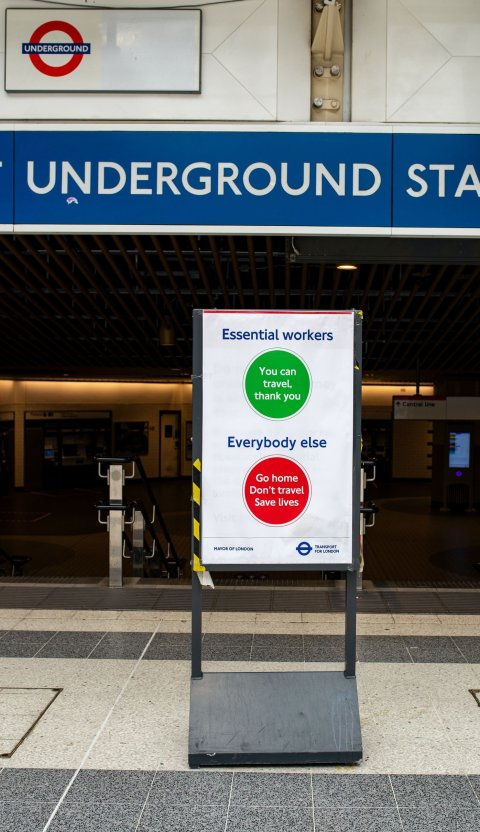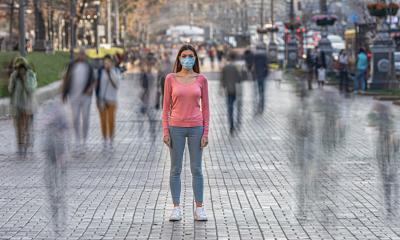
Image source: Unsplash/iMattSmart
News • Restriction research
COVID-19: The earlier the lockdown, the fewer new cases, study shows
Physical distancing measures, such as closing schools, workplaces, and public transport, and restricting mass gatherings, are associated with a meaningful reduction in new COVID-19 cases, finds a study published by The BMJ.
The data, gathered from 149 countries and regions, also show that implementing lockdown restrictions earlier was associated with a greater reduction in new cases. “These findings might support policy decisions as countries prepare to impose or lift physical distancing measures in current or future epidemic waves,” say the researchers.

Image source: Unsplash/Ben Garratt
Without evidence for effective treatments or a successful vaccine for COVID-19, physical distancing has been recommended to minimise transmission, and thus reduce risk for the most vulnerable in society. Physical distancing also therefore reduces pressure on public health and healthcare services, and allows time for the prevention and management of the disease. But ‘real-life’ data on the effectiveness of physical distancing measures are scarce.
To address this evidence gap, a team of UK and US researchers set out to compare the change in new cases (incidence) of COVID-19 before and up to 30 days after implementation of physical distancing measures in the early stages of the pandemic. Their findings are based on daily reported cases of COVID-19 for 149 countries or regions that implemented one or more of five physical distancing measures - closures of schools, workplaces, and public transport, restrictions on mass gatherings and public events, and restrictions on people’s movement within countries or regions (‘lockdown’) - between 1 January and 30 May 2020.
On average, physical distancing measures were first implemented 9 days after the first reported case. However, some countries took longer to implement measures, including Thailand (58 days), Australia (51 days), Canada (46 days), Sri Lanka and the UK (45 days), Finland and Malaysia (42 days), and Cambodia, Sweden, and the US (40 days). On average, implementation of any physical distancing measure was associated with an overall reduction in COVID-19 incidence of 13% over the study period.
We must be careful not to mislead or overplay politically convenient findings and risk violating the public trust necessary for an effective pandemic response
Thomas May
In combination with school and workplace closure, restriction on mass gatherings seemed to be a key component associated with a decrease in COVID-19 incidence. However, closure of public transport was not associated with any additional reduction in covid-19 incidence when the other four physical distancing measures were in place - likely as a result of fewer people using public transport. The data also show that earlier implementation of lockdown together with other physical distancing measures was associated with a larger reduction in the incidence of COVID-19.
This is an evaluation of natural experiments using observational methods, so is limited in its ability to establish cause. The researchers also point to some other limitations, such as being unable to assess compliance with physical distancing or take account of other measures (like use of face coverings by the public and mobile phone apps for contact tracing and isolation) that might have helped reduce transmission, due to lack of suitable data. However, this is a large study with a robust analytical approach, and the results were similar after testing a range of alternative approaches to analyses, suggesting that the primary findings are robust to alternative analytic scenarios.
Further research is needed to provide more definitive answers about the extent, intensity, combinations, and timing of physical distancing measures, they write. The researchers suggest that as the pandemic continues to evolve, “it will be crucial to repeat and extend this analysis to assess the impacts of interventions in the longer term, as well as to study combinations and sequencing of the lifting of physical distancing restrictions.”
This study provides important preliminary evidence for the effectiveness of physical distancing measures in controlling the COVID-19 pandemic, says Thomas May at Washington State University, in a linked editorial. But he warns that failures in testing practices and data collection in many countries means that caution is needed when interpreting the findings. “We must be careful not to mislead or overplay politically convenient findings and risk violating the public trust necessary for an effective pandemic response,” he writes. He points out that calls for a coordinated, global public health infrastructure for a pandemic response have been growing for decades, and says “only by acknowledging our failures in systematic testing and data collection can we learn from our mistakes and avoid repeating them.”
Source: The BMJ
16.07.2020







